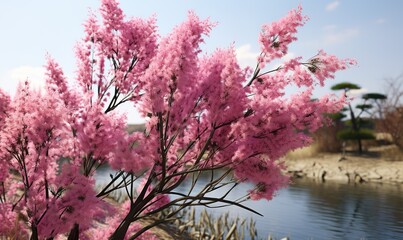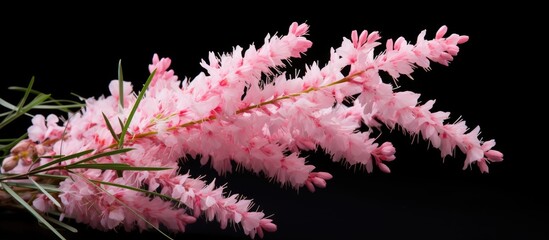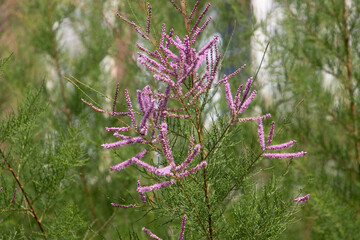



"Explore Trees, Discover Nature. " -Fr.Principal




They are evergreen or deciduous shrubs or trees growing to 1–18 m (3.3–59.1 ft) in height and forming dense thickets. The largest, Tamarix aphylla, is an evergreen tree that can grow to 18 m (59 ft) tall. They usually grow on saline soils,tolerating up to 15,000 ppm soluble salt, and can also tolerate alkaline conditions.Tamarisks are characterized by slender branches and grey-green foliage. The bark of young branches is smooth and reddish brown. As the plants age, the bark becomes gray-brown, ridged and furrowed.The leaves are scale-like, almost like that of junipers,1–2 mm (1/20" to 1/10") long, and overlap each other along the stem.The pink to white flowers appear in dense masses on 5–10 cm (2" to 4") long spikes at branch tips from March to September,though some species tend to flower in the summer until as late as November.
1. The wood may be used for carpentry or firewood.
2. It is traditionally used for gastrointestinal disorders, wounds, diabetes, and dental problems.
3. The bark of this plant is used to cure skin-related diseases, and gall on the flowers is used for its astringent effect.
4. Very tolerant of maritime exposure, it makes a good shelter hedge in coastal gardens.
5. Chinensis plant extracts and extracted principles have substantial pharmacological action, including anti-tumour, anti-inflammatory, antioxidant, anti-melanogenic, and other properties.